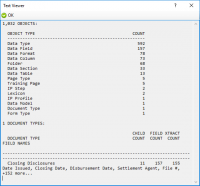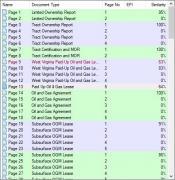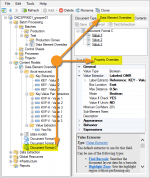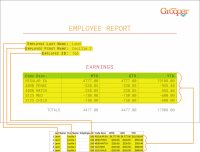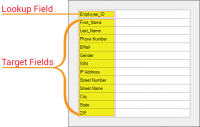Main Page: Difference between revisions
Dgreenwood (talk | contribs) No edit summary |
Dgreenwood (talk | contribs) No edit summary |
||
| Line 21: | Line 21: | ||
|-style="background-color:#d8f3f1" valign="top" | |-style="background-color:#d8f3f1" valign="top" | ||
| | | | ||
[[File: | |||
[[File:Output_extractor_key_000.png|right|link=Output Extractor Key]] | |||
<blockquote style="font-size:14pt"> | <blockquote style="font-size:14pt"> | ||
'''[[ | '''[[Output Extractor Key]]''' | ||
</blockquote> | </blockquote> | ||
'''''Output Extractor Key''''' is a property on a the '''[[Data Type]]''' extractor. It is exposed when the '''''[[Collation]]''''' property is set to ''Individual''. When the '''''Output Extractor Key''''' is set to ''True'', each output value will be set to a key representing the name of the extractor which produced the match. It is useful when extracting non-word classification features. | |||
<br/><br/> | |||
''''' | The main purpose of this property is to supplement the capabilities of '''Grooper's''' classification technology. When using ''Lexical'' classification, a '''Content Model''' must use an extractor to collect the lexical features upon training. A common use case is to have the extractor collect words, which is beneficial when the semantic content of a document is varied among examples, and indicative of their type. However, this breaks down when a document consists mainly of repeated types of information. Take, for example, a bank statement. With no keywords present on the document, the only way to properly classify the document is to recognize that it contains a high frequency of transaction line items. It would be highly impractical to train '''Grooper''' to understand every variation of a transaction line item. | ||
<br/><br/> | |||
This is where the '''''Output Extractor Key''''' property comes into play. In using this property one can establish an extractor that will pattern match the various transaction line item formats on the document, and return A SINGLE output for each result, such as "feature_transaction", instead of the myriad returned results from the pattern match. This is then fed to the classification engine. With this approach a document containing a high frequency of "transaction" features, let's say ... 50, will be treated as though it contained 50 separate occurrences of the phrase "feature_transaction". | |||
| | | | ||
You can | You can now manually manipulate the confidence of an extraction result. The '''''[[Confidence Multiplier and Output Confidence]]''''' properties of '''[[Data Type]]''' and '''[[Data Format]]''' extractors allow you to change the confidence score of extraction results. No longer are you forced to accept the score Grooper provides. These properties give you more control when it comes to what confidence a result ''should'' be. | ||
This allows you to prioritize certain results over others. You can create a kind of "fall back" or "safety net" result by using this property. You can even ''increase'' the confidence of an extractor's result, allowing you to give more weight to a fuzzy extractor's result over a non-fuzzy one, for example. | |||
For more information visit, the [[Confidence Multiplier and Output Confidence]] article. | |||
|} | |} | ||
Revision as of 12:45, 14 September 2020
| Getting Started | |||
|
Grooper is a software application that helps organizations innovate workflows by integrating difficult data. Grooper empowers rapid innovation for organizations processing and integrating large quantities of difficult data. Created by a team of courageous developers frustrated by limitations in existing solutions, Grooper is an intelligent document and digital data integration platform. Grooper combines patented and sophisticated image processing, capture technology, machine learning, and natural language processing. Grooper – intelligent document processing; limitless, template-free data integration. |
Getting Started | ||
| Install and Setup | |||
| 2.90 Reference Documentation | |||
| Featured Articles | Did you know? |
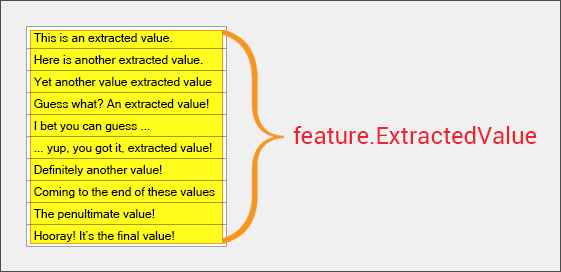 Output Extractor Key is a property on a the Data Type extractor. It is exposed when the Collation property is set to Individual. When the Output Extractor Key is set to True, each output value will be set to a key representing the name of the extractor which produced the match. It is useful when extracting non-word classification features.
|
You can now manually manipulate the confidence of an extraction result. The Confidence Multiplier and Output Confidence properties of Data Type and Data Format extractors allow you to change the confidence score of extraction results. No longer are you forced to accept the score Grooper provides. These properties give you more control when it comes to what confidence a result should be. This allows you to prioritize certain results over others. You can create a kind of "fall back" or "safety net" result by using this property. You can even increase the confidence of an extractor's result, allowing you to give more weight to a fuzzy extractor's result over a non-fuzzy one, for example. For more information visit, the Confidence Multiplier and Output Confidence article. |
| New in 2.9 | Featured Use Case | ||||||||||||||||||||||||||||||||||||
|

Discover how they:
| ||||||||||||||||||||||||||||||||||||
| Other Resources | |||
|
|||

